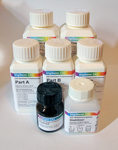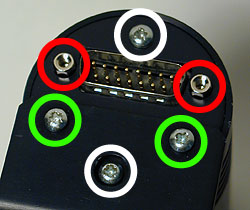Rollei / Compard Digibase C-41 Processing Kit

I just received this great C-41 process developing kit (I got the 20 roll kit) from freestylephoto.biz, and I’m diving head-first in to processing my own color film for the first time.
The process seems only a bit little more complicated than black and white and the Rollei / Digibase chemicals have the advantage of being usable at an easy to maintain 25°C.
I put this page together as a cheat-sheet for myself and most of the information here can be found in the Rollei / Compard Digibase C-41 Processing Kit Instruction Guide [PDF]


